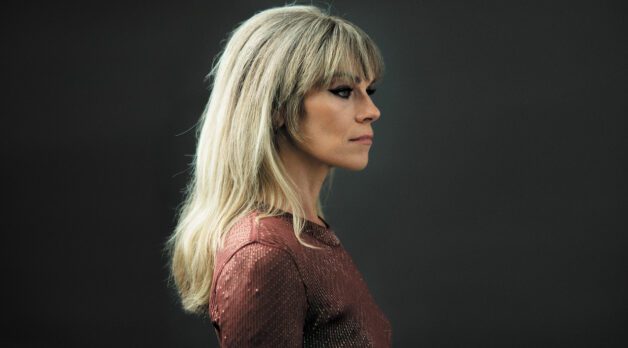Alex Prager
 Alex Prager
Alex Prager

Alex Prager was 20, playing drums in an LA band and having what she calls “a life crisis.” “I thought, ‘This cubicle I’m in, these jobs I have to take on the weekend to pay for my rent and food, aren’t ever going to change. How can I make sure this is not the life I end up with?’” At the Getty Museum, a William Eggleston photograph of dust-covered brown shoes underneath a bed provided an unexpected answer. “I had a physical reaction [to the photograph],” she recalls, “like I had found meaning in my life.” Six months of street photography followed, and when a friend invited her to share a two-person show at a DIY gallery, Prager included one color photograph among her black-and-white images. A “staged photograph” of a woman’s legs clad in “two pointy blue high-heeled shoes,” shot in Griffith Park among tumbleweeds, the picture was “an homage to The Wizard of Oz,” and it was the photo everyone at the show wanted to talk about. “I made up a story about it,” she says, and “from that point, I just started making color staged photographs, burning that candle really bright for about seven years. I was just possessed by the medium.”
A further inching toward narrative film came when viewers at a London show asked Prager to tell them about the stories her subjects were characters in. “This idea of a series of pictures that told you the before and after the crucial moment was really interesting to me,” she says, “so I started making films with that idea in mind—almost like a series of stills that happened to move.” Bryce Dallas Howard starred in the first of these, 2010’s Despair, and when, the next year, Prager was asked by the New York Times to make shorts with Oscar nominees, she expanded her approach even further. With these one-minute shorts featuring, among others, Brad Pitt in a silent scream as butterflies got tangled in his Eraserhead-styled hair and Rooney Mara as a reverse-motion Alex from A Clockwork Orange, “I began to really understand the possibilities of film,” she says, and “became possessed by a whole other medium.”
Prager’s latest work, the arresting Run, stars Katherine Waterston as a woman fleeing the destructive path of a giant aluminum pinball ricocheting across a crowded city street. There’s a comedic surreality to the work, vibrantly realized with pop style on a studio lot, but Run has its roots in pandemic anxieties. “I had to make a film about the way I was feeling because that’s how I deal with problems and questions,” Prager says. “I love big blockbuster action movies, and the idea of seeing this huge silver reflective ball coming at us is absurd. But life [then] felt absurd, a constant emotional roller coaster.” The short was the centerpiece of the exhibition Part Two: Run this past spring at Prager’s gallery, Lehmann Maupin, in New York, while the same month the short showed at SXSW—the first time a Prager film has played in a film festival context.
Prager says her films exist in “a parallel universe to some degree—more colorful, more dramatic, more everything, but grounded in the ideas that we’re struggling with today.” In-camera visual effects are a throughline in her work. “It’s important for me that in a fictionalized world full of artifice you know that everything you see you can touch, feel and interact with.” She traces her interest in special effects to her early life as a child actor: “I was in an episode of Tales from the Crypt directed by the master special effects artist Kevin Yagher. It has a two-headed animatronic man, and I was fascinated by the sets and the scenery for its 1920 carnival setting.” Working with storyboard artist Joel Venti and producers Jeremy Dawson and DreamQuil producer Vincent Landay, she precisely maps out her productions. “I like to commit to my ideas before I understand the logistics because I already know the logistics can be worked out. Is the idea saying what I want to say, and is it important enough to me to go through the hell of figuring it out?”
Prager’s next creative expansion is the aforementioned DreamQuil, a near-future, AI-themed feature set within the wellness industry. The film, says Prager, is “a love letter to DePalma” that deals with how much of ourselves we are outsourcing to technology. “By giving up those tiny responsibilities almost on a minute-by-minute basis at this point, we’re actually giving up this much larger idea of what it is to be human,” she says. Prager will resume work on the film, produced by Elizabeth Banks’s and Max Handelman’s Brownstone Productions, as soon as the Hollywood labor strikes conclude.—SM/Image: Jeff Vespa
